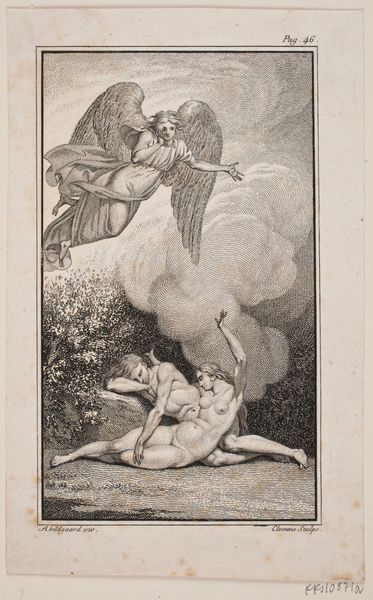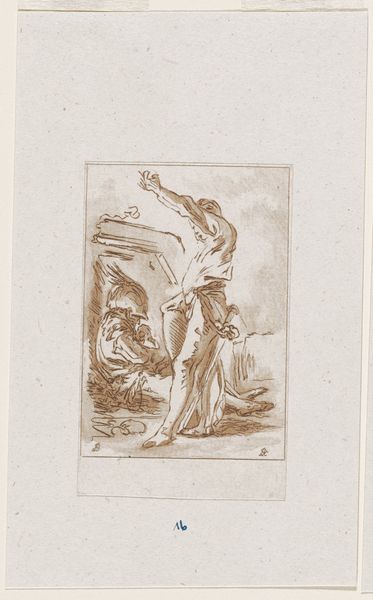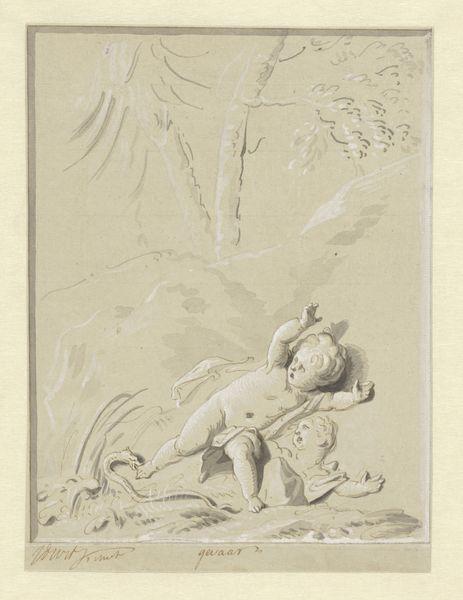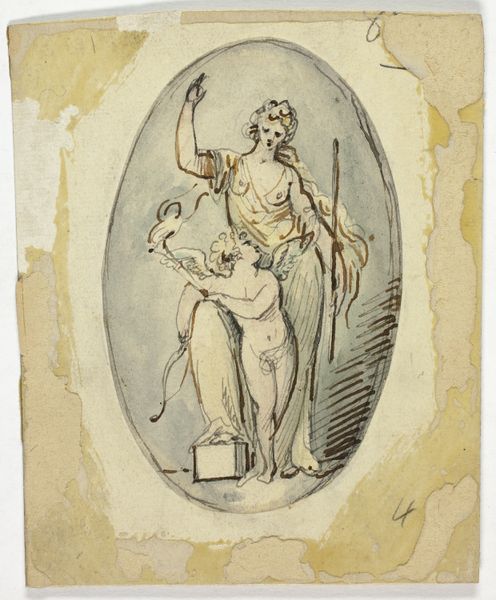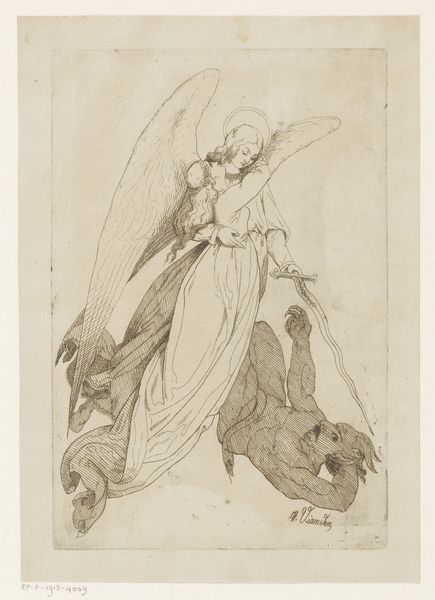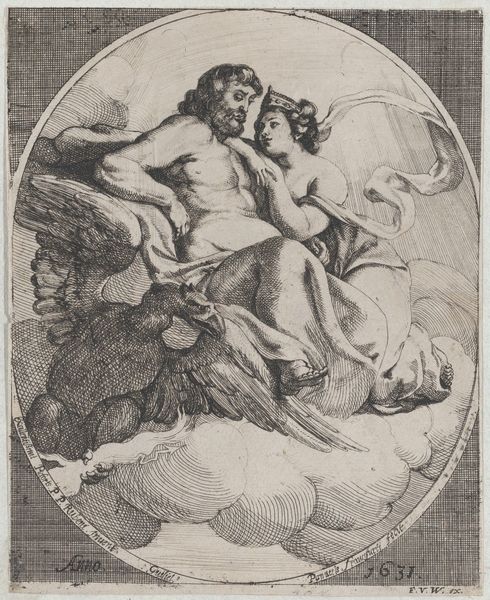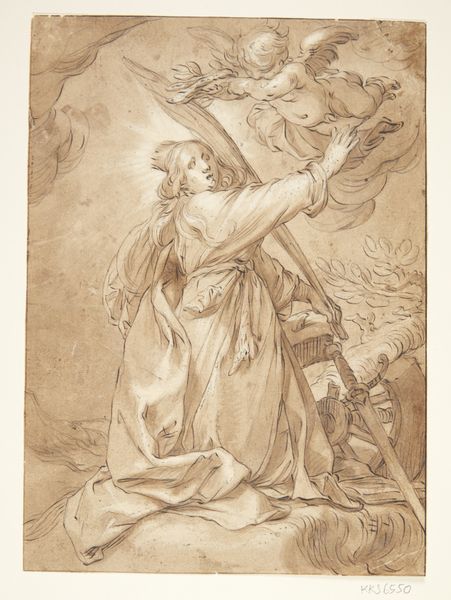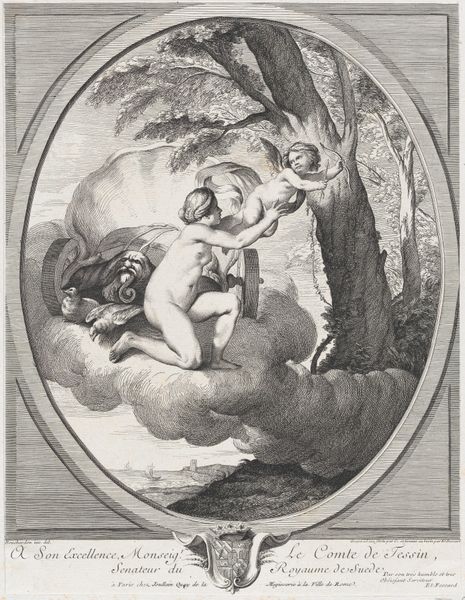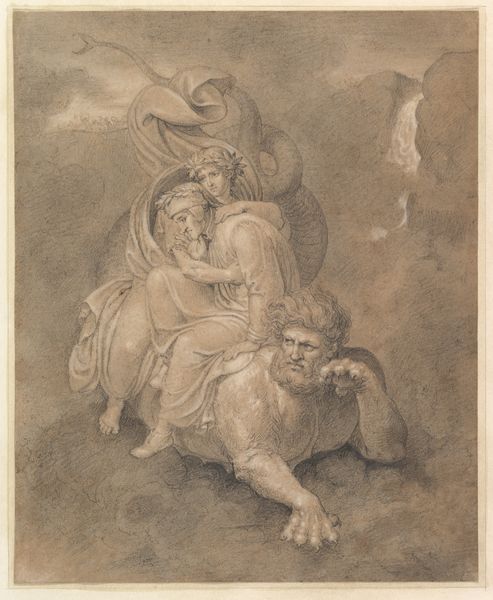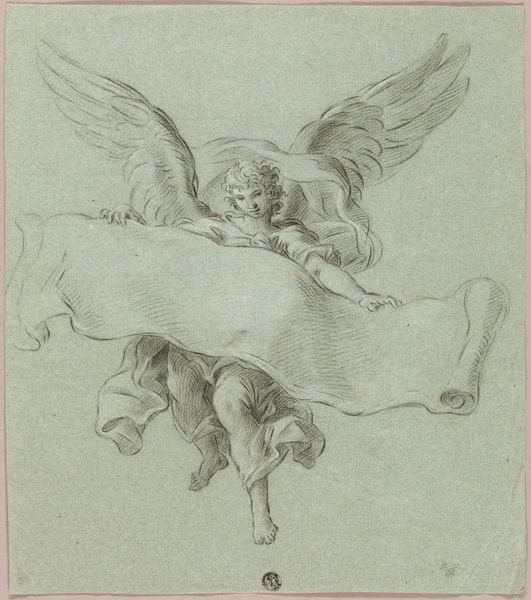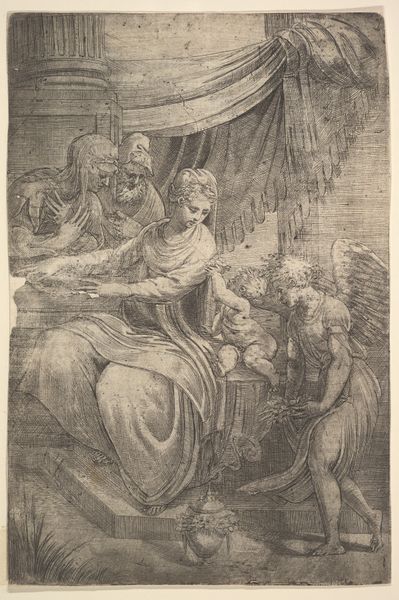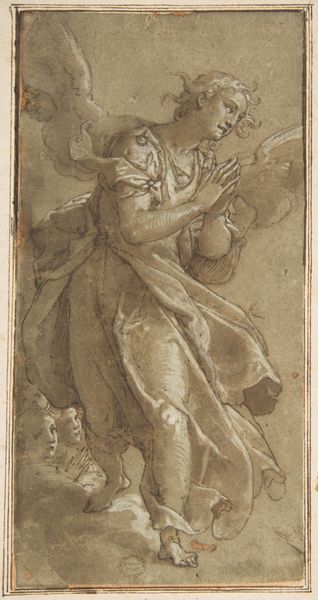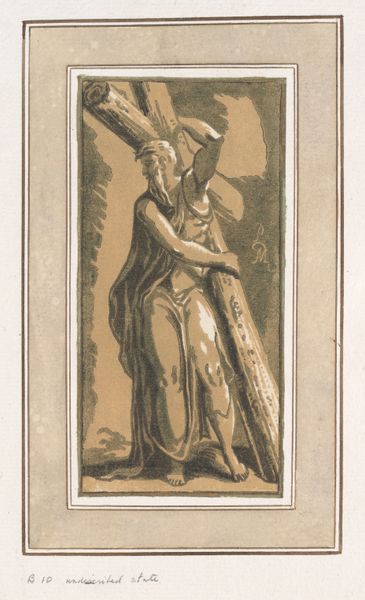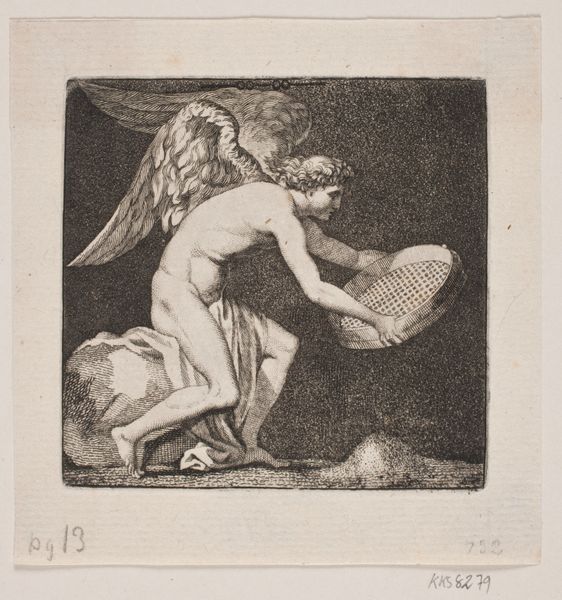
Dimensions: 134 mm (height) x 79 mm (width) (bladmaal)
Curator: What a fascinating and, dare I say, emotionally charged drawing. I am immediately drawn to the way that Adam lies asleep on the earth, the first woman has risen and is beckoned upwards by an angel. It gives the scene a beautiful feeling of the birth of innocence, the way it's depicted…what are your thoughts? Editor: This is “Evas skabelse” or “The Creation of Eve,” made between 1777 and 1780 by Nicolai Abildgaard, located right here at the SMK. What I find fascinating is how it positions itself within art history. You see, this depiction of the creation of Eve deviates significantly from traditional representations. Curator: It does, doesn't it? Traditional versions tend to focus on the miracle, a divine intervention that almost feels like a surgery, while Abildgaard's approach is softer, more poetic. Eve’s birth, depicted as if a beautiful angel woke the first woman while Adam still sleeps…almost seems to say it was her destiny all along. The artist used pencil and coloured pencil on paper, yes? It’s Romantic in spirit. Editor: Indeed, and Abildgaard was a key figure in Danish Romanticism. Think about the historical context here. During the late 18th century, ideas about human potential, reason, and the individual were undergoing major shifts, especially with thinkers such as Rousseau. Curator: Yes! You can almost sense those shifts in the figures themselves! The angel doesn't loom or command; there's more an open invitation in the image. It whispers possibility and free will. I wonder if the open hand indicates the artist thinking about free will at that period of thought…the start of so many different thoughts that would be opened in later decades. Editor: Precisely. The creation story isn't just a religious moment here, it’s an examination of humanity. It speaks to how Abildgaard’s political leanings— he was quite radical—influenced how he visualized foundational narratives. Curator: You know, that totally resonates when looking at Eve. She almost meets the angel half-way. Like the artist wanted Eve to take her new life with all its struggles to create an image that felt alive with emotion, rather than something purely didactic. Editor: That’s what I find endlessly interesting: how art reimagines cultural touchstones to reflect the social and political dynamics of its time. I feel this gives the opportunity to view it again under a completely different point. Curator: Absolutely, and it's those dynamics that allow "Evas skabelse" to stay so vibrant and alive even now, centuries after it was created! Editor: It definitely encourages me to consider not only the story, but also the political lens behind how these classic biblical scenes are painted in time.
Comments
No comments
Be the first to comment and join the conversation on the ultimate creative platform.
